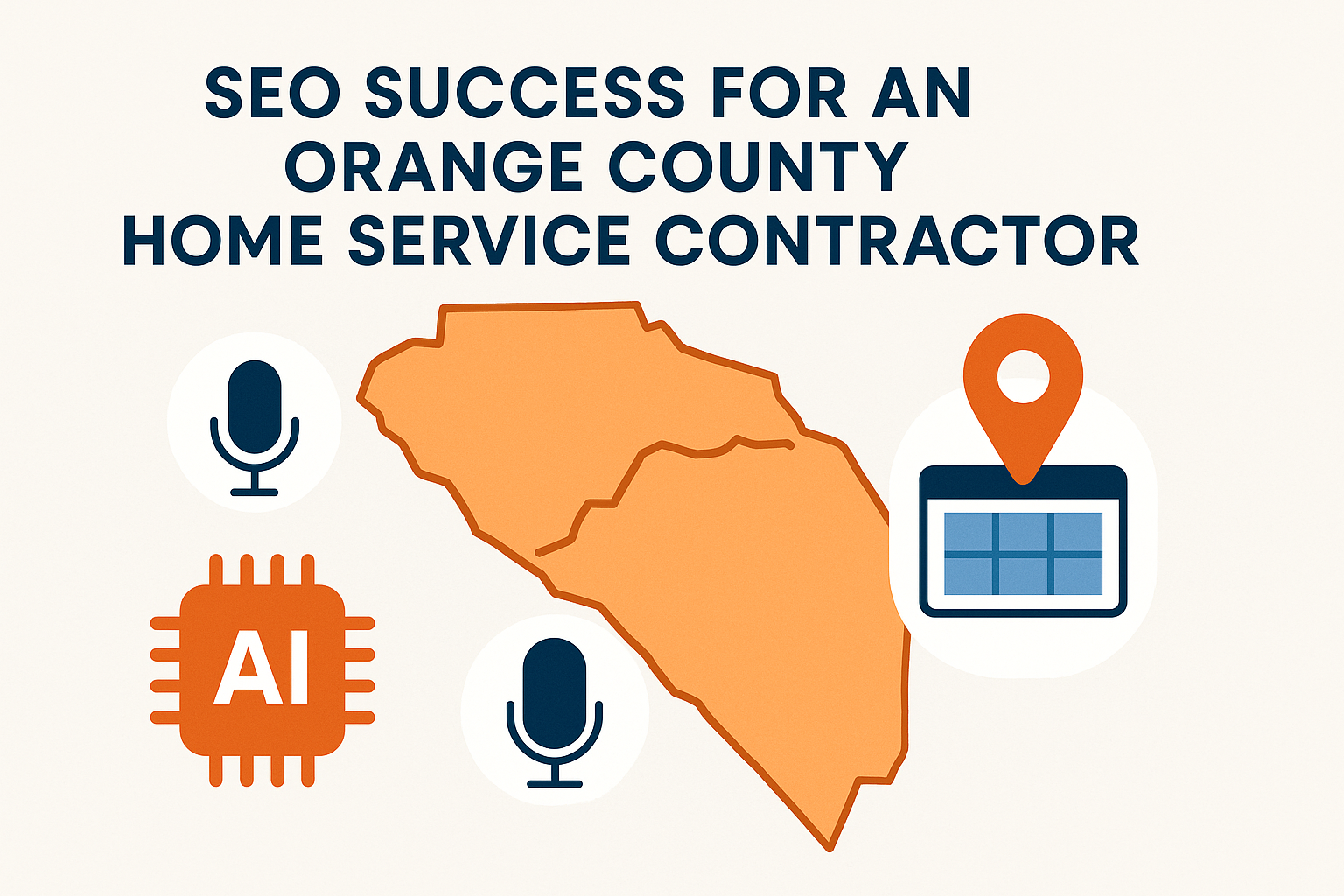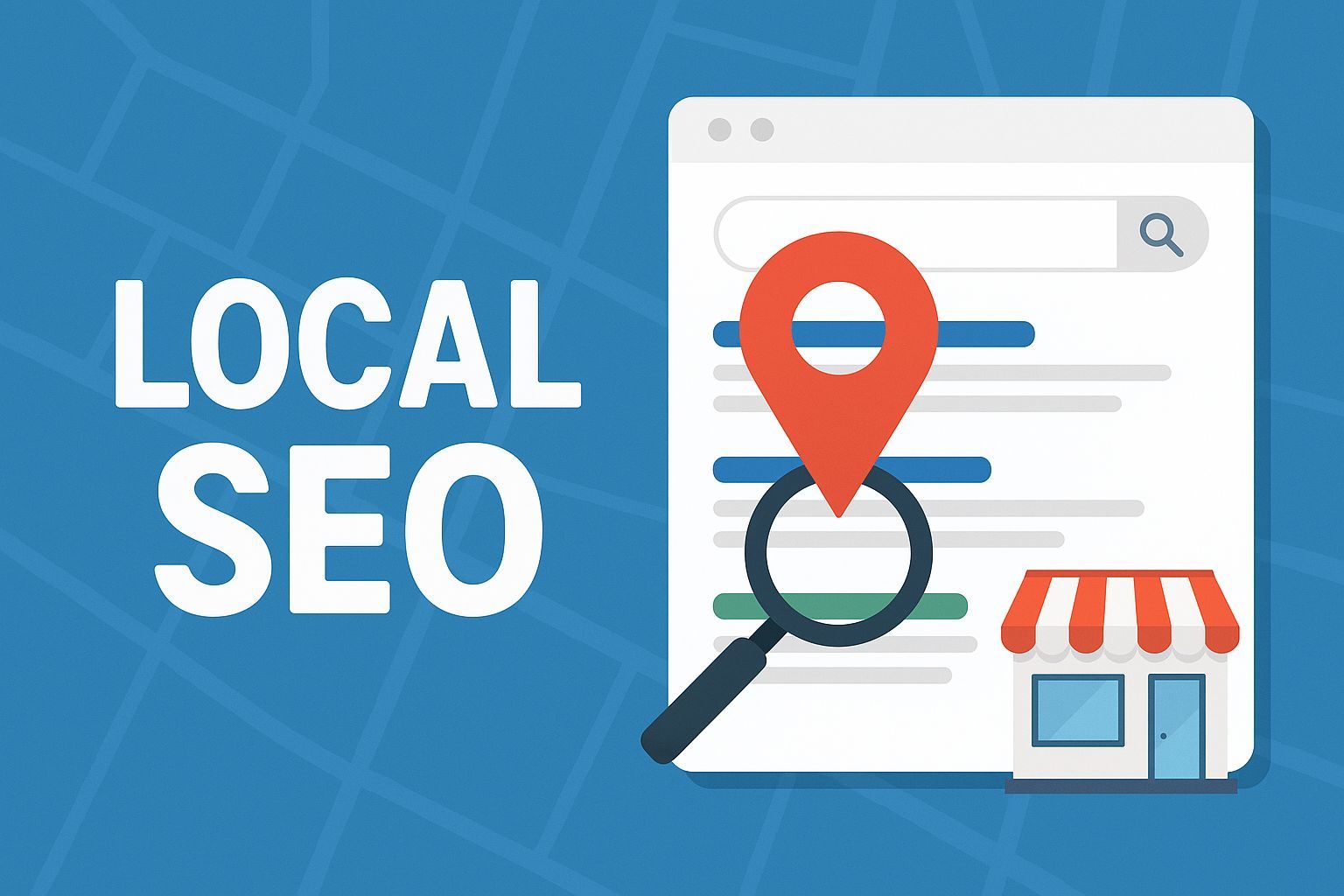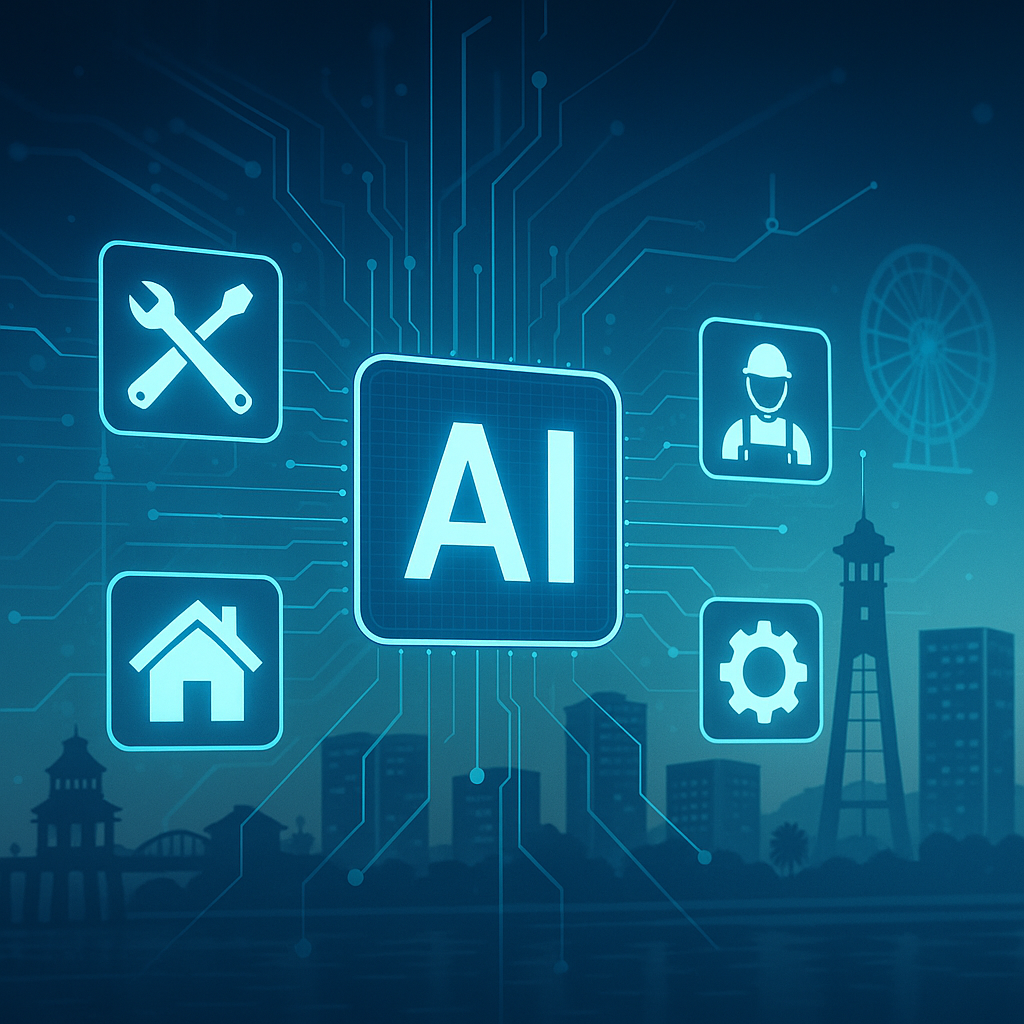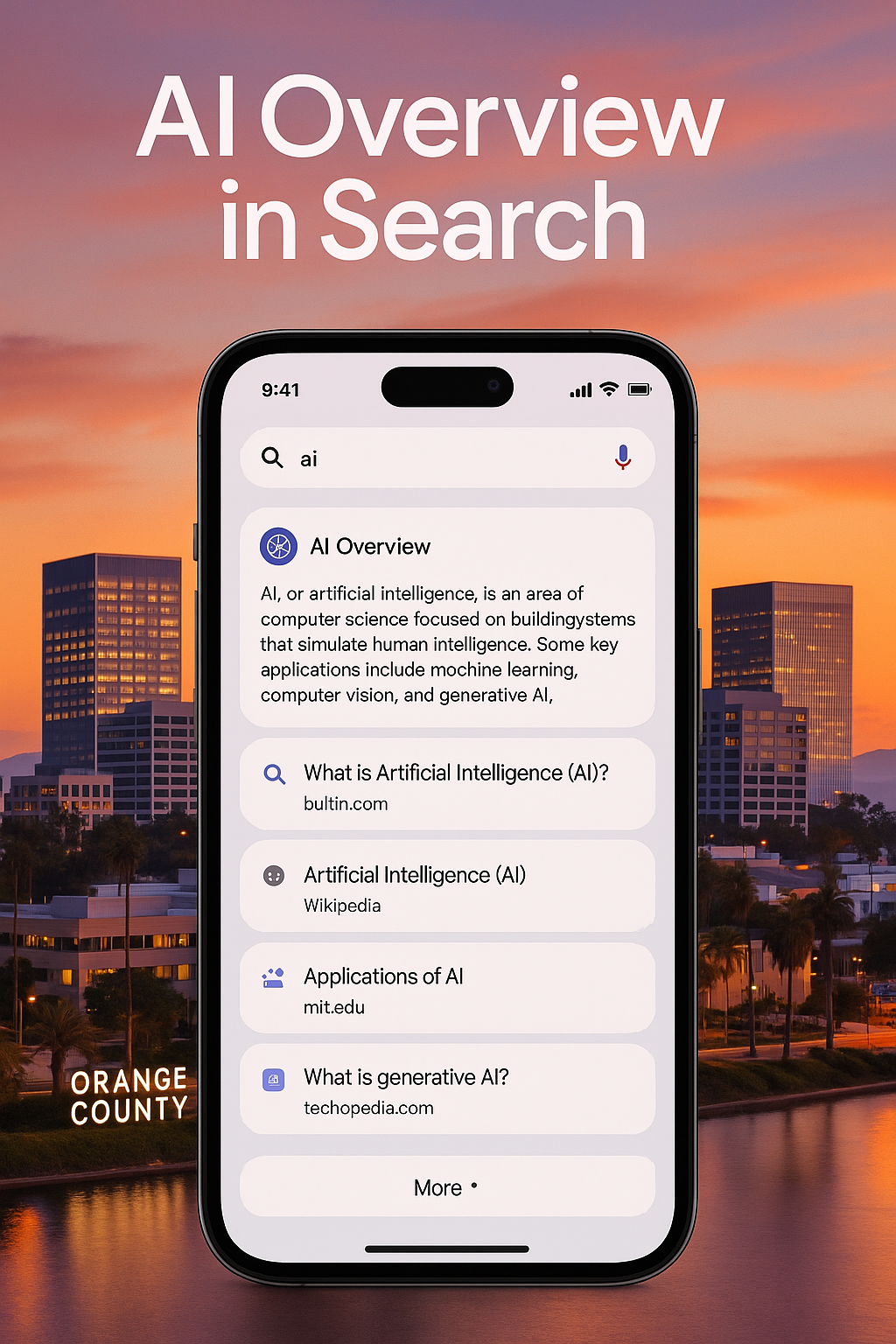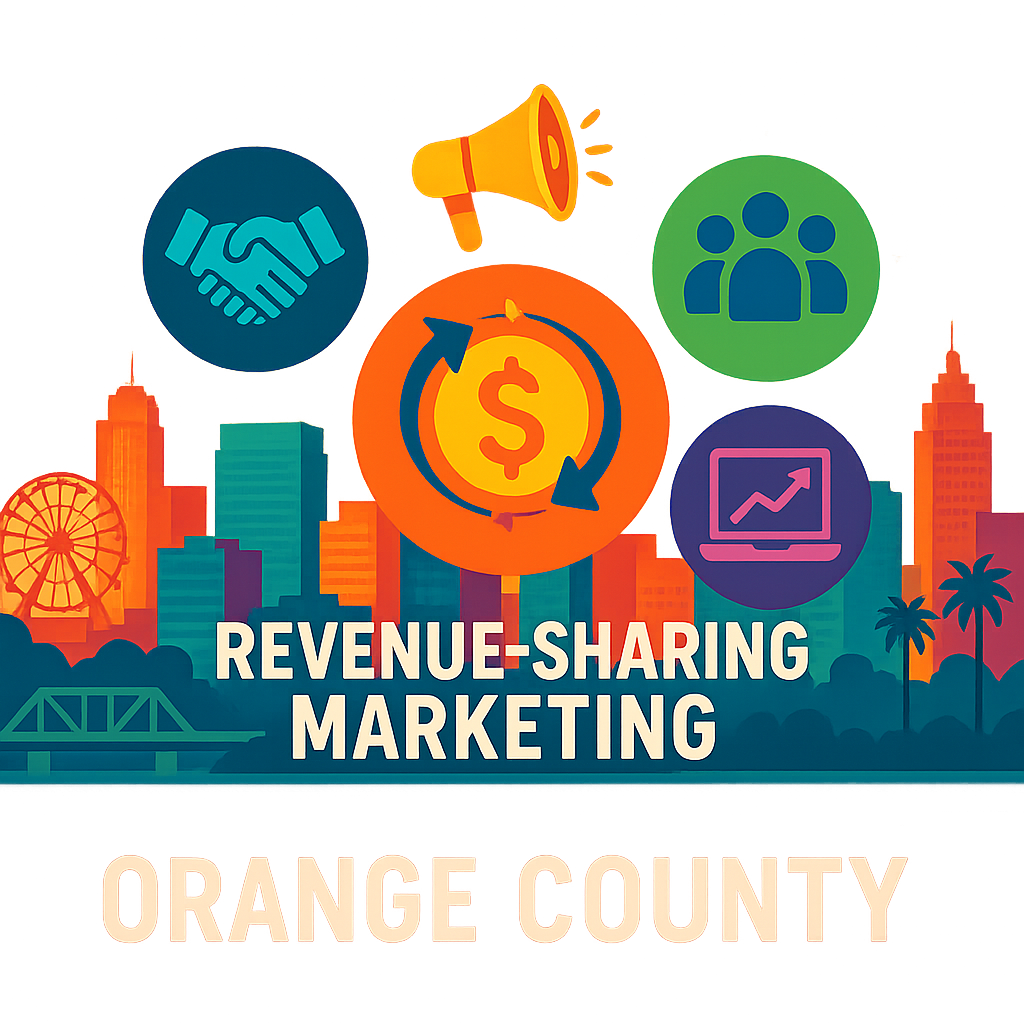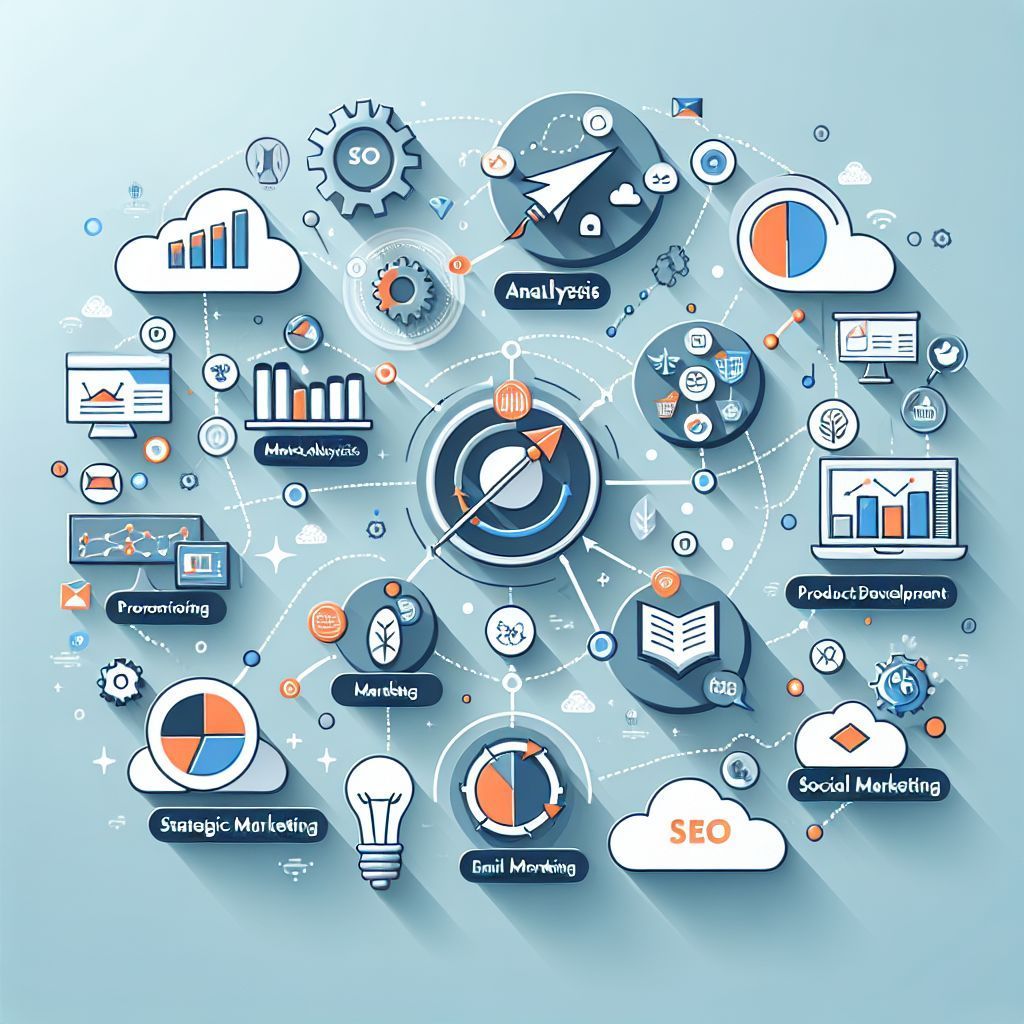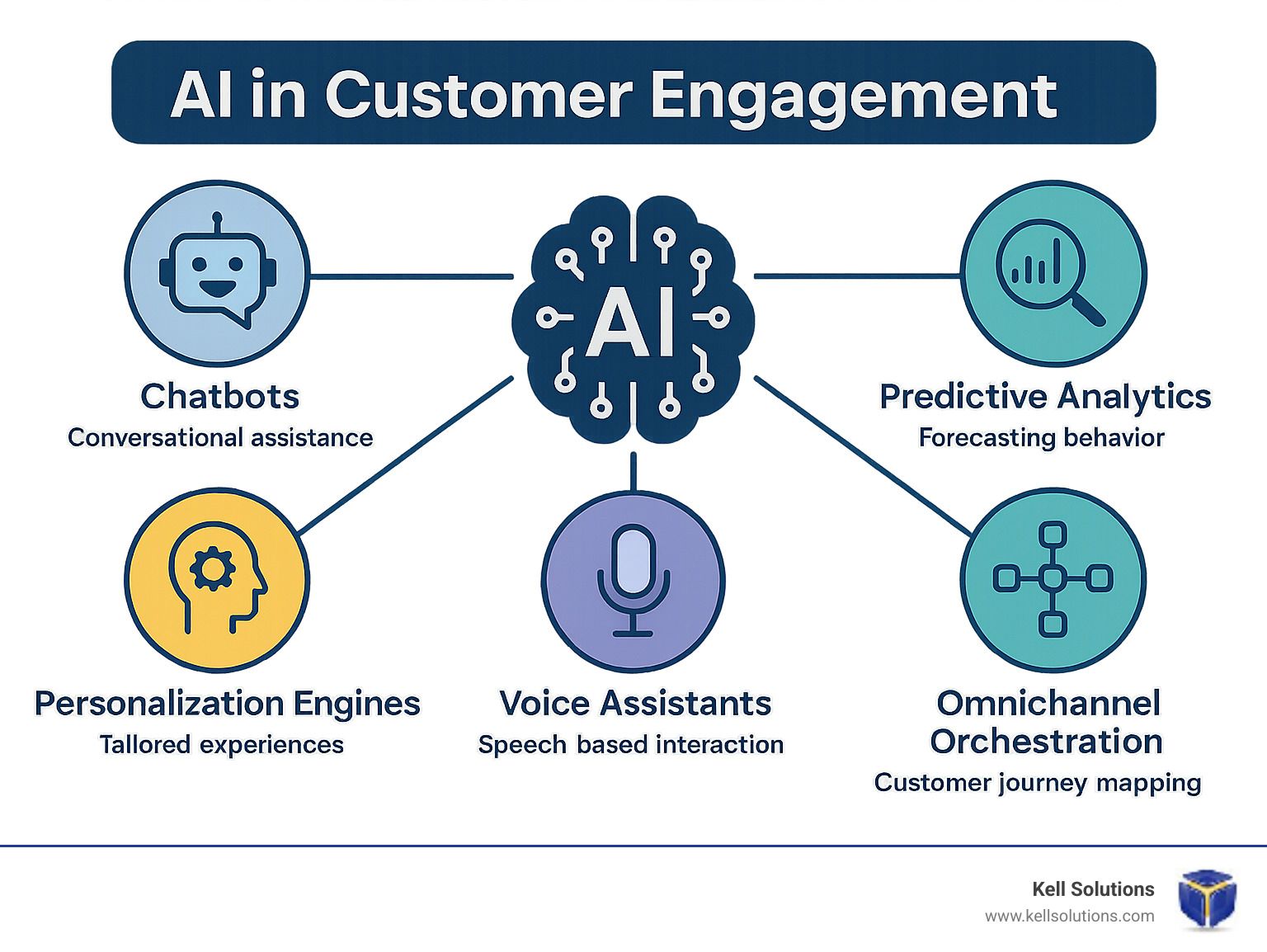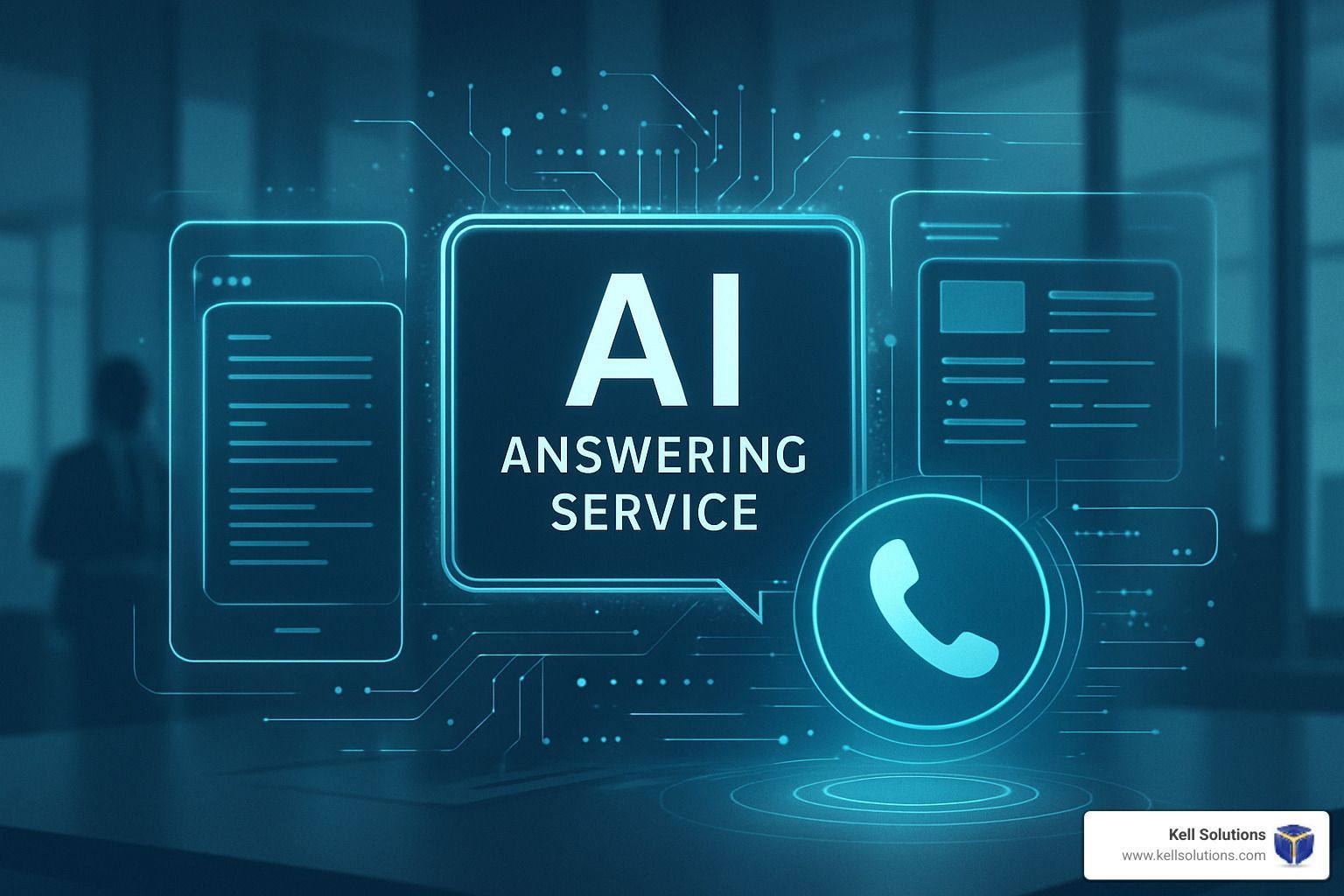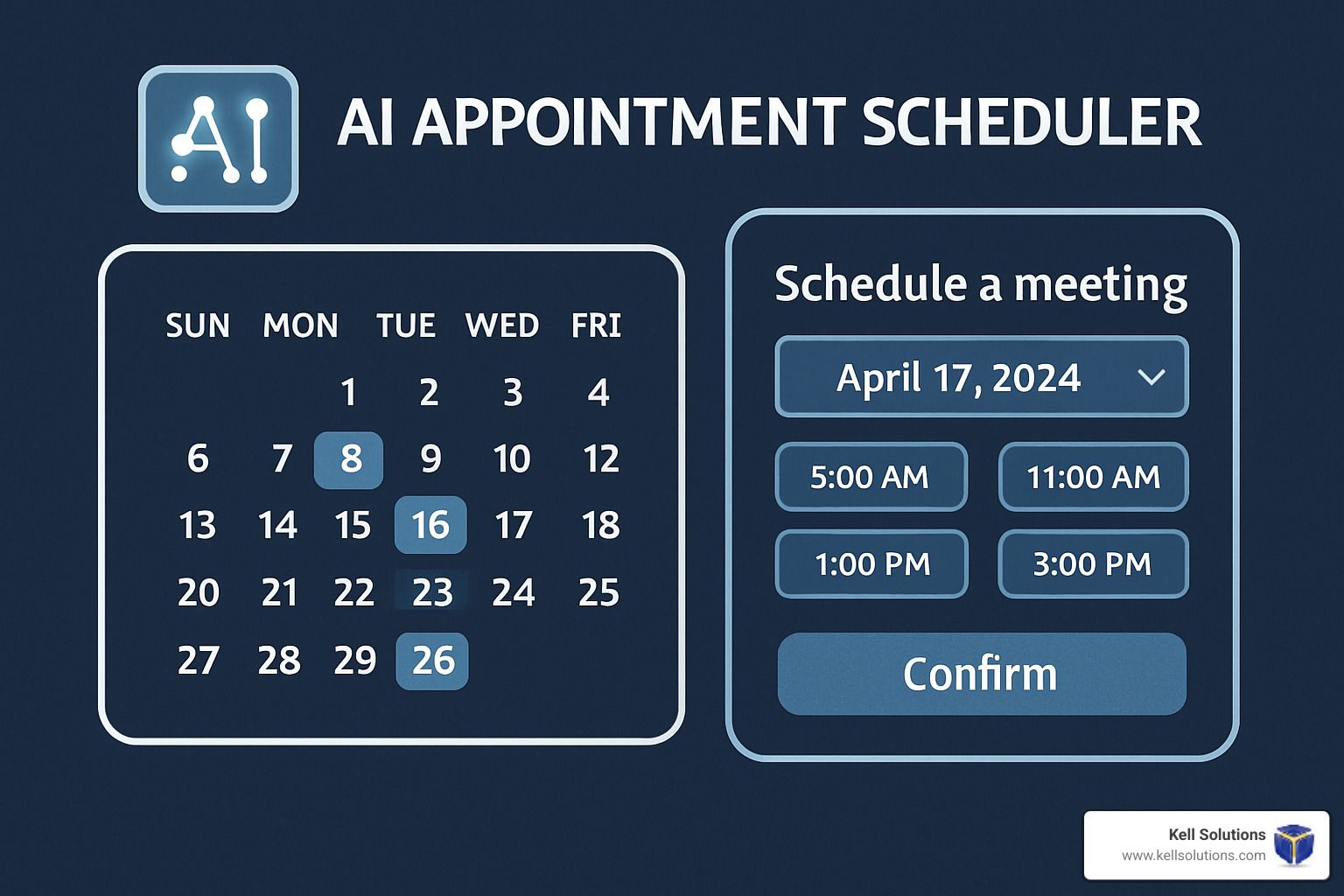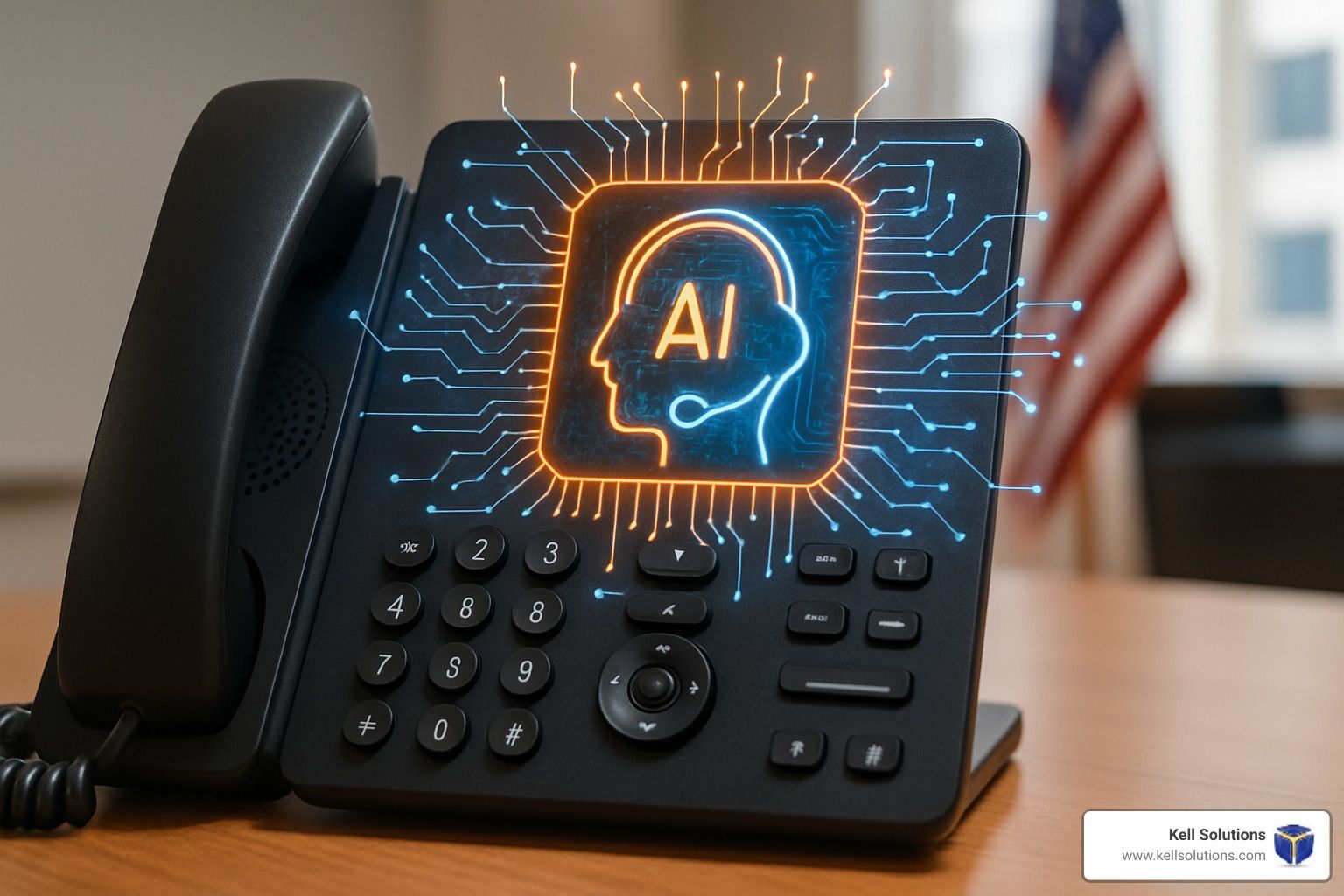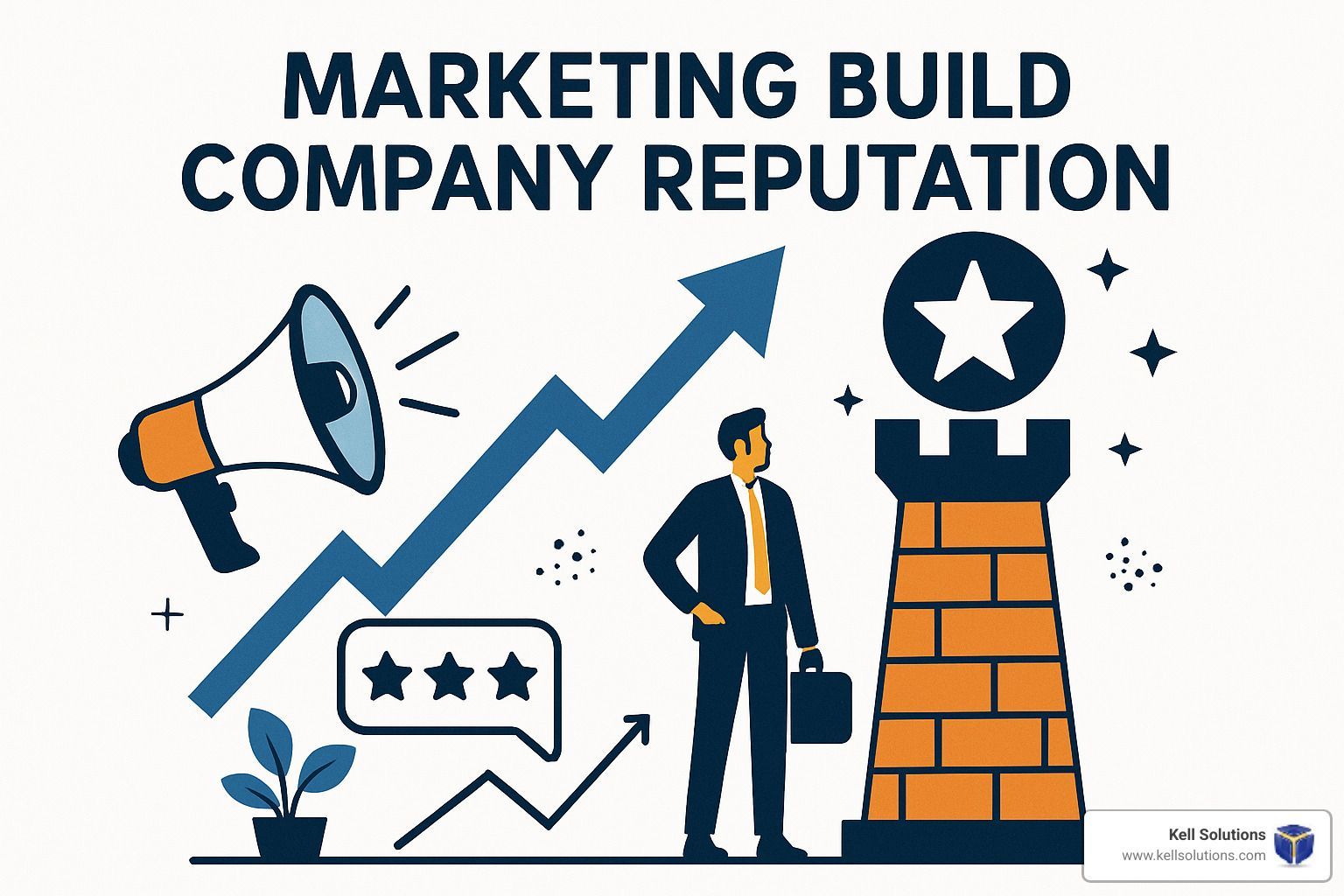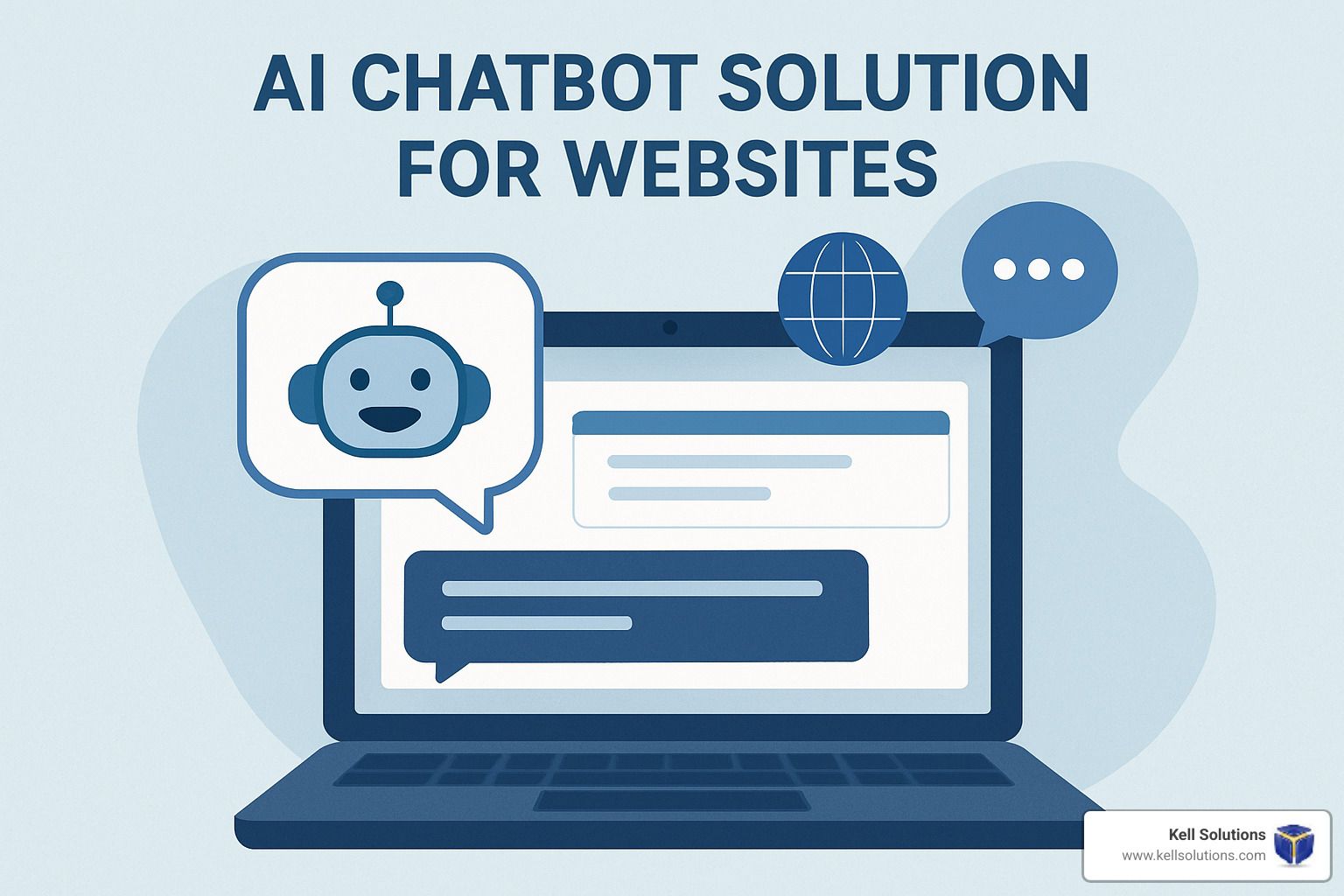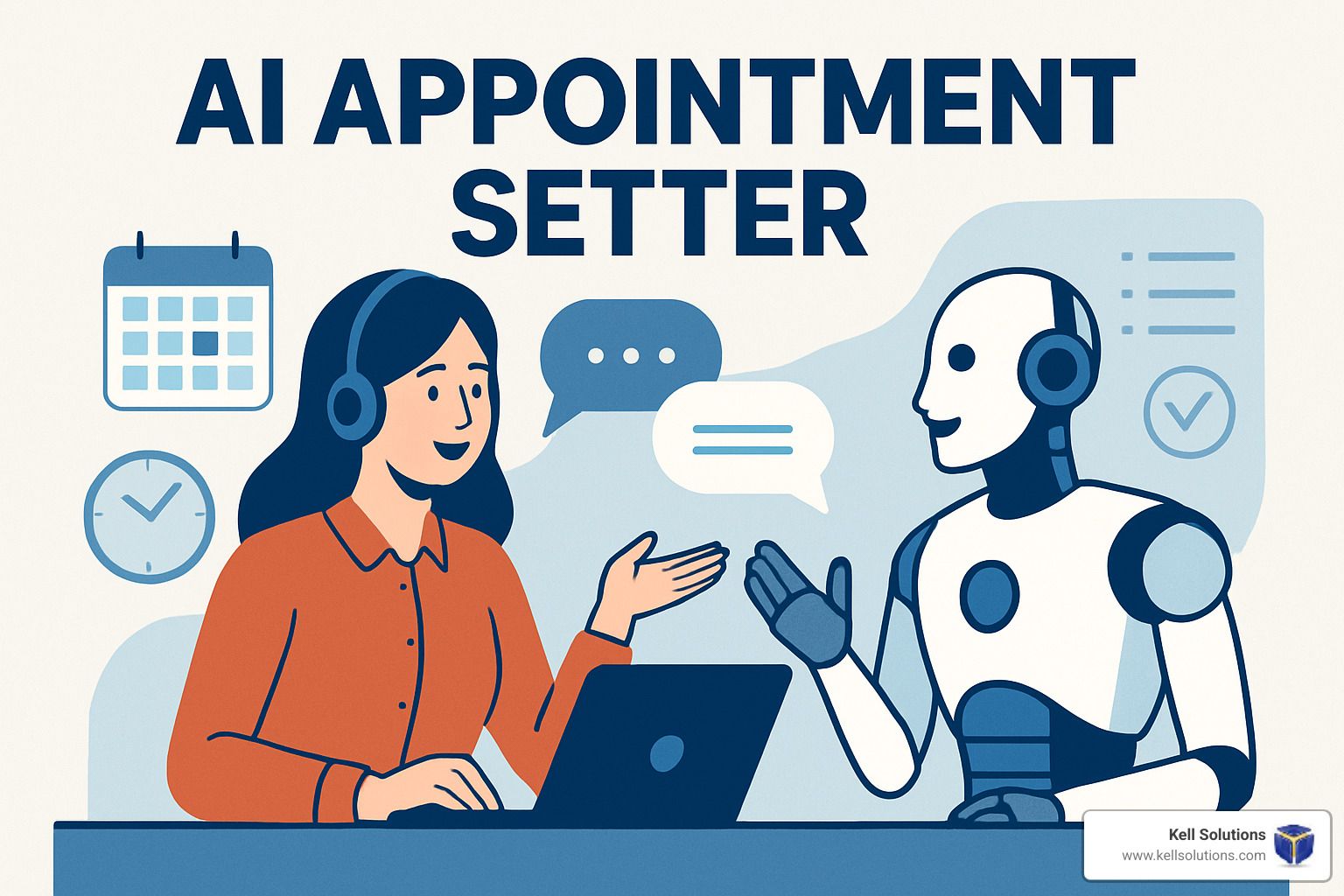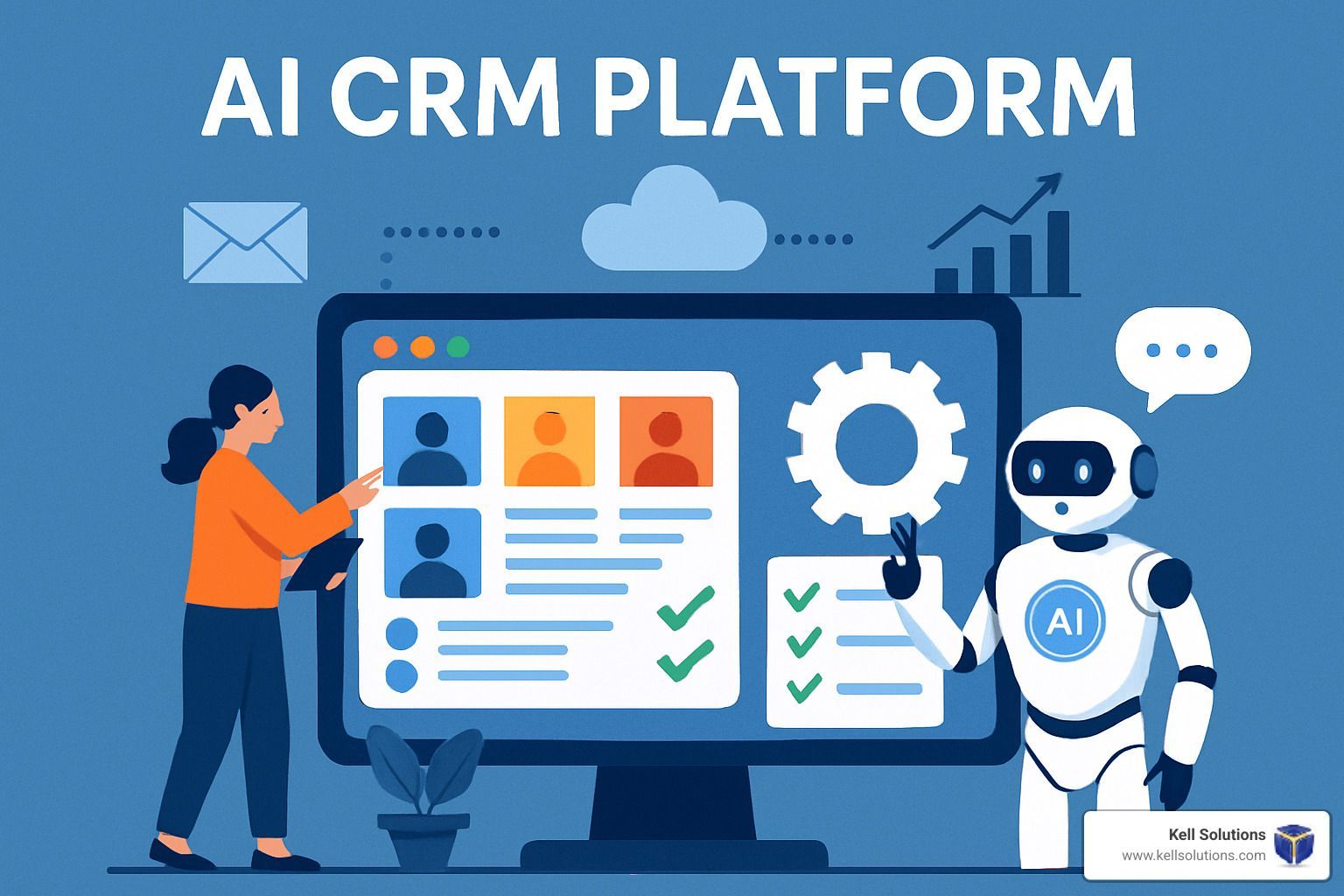AI Business Transformation Strategies & Tips Guide
Strategic Planning for Long-Term Success

Article-At-A-Glance
- 73% of SMBs automating high-volume tasks with AI achieve 41% cost reductions and 62% fewer errors according to Gartner's latest research
- Companies implementing AI transformation strategies see 5.8x ROI on training investments and 4.2x faster decision cycles
- The 4-step AI implementation framework begins with workflow auditing and prioritizes quick-win use cases before scaling
- Customer service, sales processes, and marketing personalization offer the fastest paths to AI-driven ROI
- VoiceGenie AI helps businesses bridge current operational needs with future innovations through scalable automation solutions
AI isn't just changing business – it's redefining what's possible. As companies rush to implement artificial intelligence, the gap between early adopters and laggards grows wider every quarter.
The numbers tell a compelling story: 73% of small and medium businesses automating high-volume tasks with AI achieve 41% cost reductions and 62% fewer errors. But successful AI transformation requires more than just purchasing software – it demands a strategic approach that aligns technology with core business objectives.
Let's explore how businesses of all sizes can implement AI transformation strategies that deliver measurable results while building foundations for long-term competitive advantage. VoiceGenie AI has been at the forefront of helping companies navigate this transition with tools specifically designed for businesses looking to enhance operational efficiency while maintaining a human touch.
5 Ways AI Is Already Transforming Successful Businesses
Forward-thinking organizations aren't waiting for the future – they're recognizing emerging AI trends and are creating it today through strategic AI implementation. The most successful companies focus on practical applications that solve real business problems rather than chasing trendy technologies without clear purpose.
73% of Companies See ROI Within 12 Months of AI Implementation
The days of AI as a speculative investment are over. Research shows that nearly three-quarters of businesses implementing targeted AI solutions recover their investment within the first year. This rapid ROI comes from focusing on high-friction areas where automation creates immediate efficiency gains. For example, companies using AI-powered document processing report 78% reductions in manual handling time and 93% fewer processing errors.
Small Businesses Cut Operational Costs by 41% Using AI Automation
Contrary to popular belief, small businesses often see the most dramatic proportional benefits from AI adoption. By automating routine tasks like data entry, appointment scheduling, and basic customer inquiries, SMBs redirect limited human resources toward high-value activities that drive growth. The most successful implementations start with process-heavy departments like accounting, where AI-powered solutions can automate 65-80% of manual transactions.
Customer Experience Enhancement is the #1 AI Success Story
While cost-cutting makes headlines, customer experience improvements deliver the most substantial long-term value. Businesses implementing conversational AI report 70% faster response times, 24/7 availability, and 92% customer trust scores. The key lies in using AI to augment rather than replace human agents – handling routine inquiries automatically while escalating complex issues to staff who now have more time for meaningful customer interactions.
"The businesses seeing the greatest AI transformation success don't view it as a technology project but as a strategic capability that touches every aspect of operations. They're not just automating existing processes – they're reimagining what's possible when human creativity meets machine intelligence." - Harvard Business Review, 2023
The 4-Step Framework for Implementing AI in Your Business
Successful AI transformation requires a structured approach that balances quick wins with long-term strategic evolution. This framework provides a proven pathway to implementation that works across industries and company sizes. As AI becomes deeply embedded in business, understanding these strategies is crucial for success.
1. Audit Your Current Workflows to Find AI Opportunities
Begin by mapping your current processes to identify high-impact automation opportunities. Look specifically for tasks that are: repetitive and rule-based, data-intensive, time-sensitive, or prone to human error. Process mining tools like Celonis can help visualize workflows and quantify inefficiencies. The most promising AI candidates typically involve high-volume activities that follow consistent patterns but consume disproportionate staff time.
2. Start Small: Choose One High-Impact Process
Resist the temptation to transform everything at once. Select a single strategy with clear success metrics and substantial business impact. Customer service automation, lead qualification, or invoice processing often provide ideal starting points with clearly measurable outcomes. By focusing resources on one high-visibility project, you build organizational confidence and develop implementation expertise that can be applied to future initiatives.
3. Select the Right AI Tools for Your Specific Needs
AI solutions span a wide spectrum from pre-built applications to custom development platforms. For most businesses, especially those new to AI implementation, specialized tools designed for specific business processes offer the fastest path to value. Look for solutions with proven track records in your industry, seamless integration capabilities with your existing systems, and transparent pricing models that align with your expected usage patterns.
4. Measure Success with Clear KPIs
Establish concrete metrics before implementation to objectively evaluate performance. Effective AI measurement frameworks include both efficiency metrics (time saved, error reduction, processing speed) and business impact indicators (customer satisfaction, revenue influence, employee experience). Document baseline performance before implementation to accurately quantify improvements and continuously monitor performance to identify optimization opportunities.
AI Transformation Barriers You'll Face (And How to Overcome Them)
Despite compelling benefits, AI implementation comes with significant challenges. Understanding these barriers before you begin allows you to develop mitigation strategies rather than encountering surprises mid-project.
The Real Cost of AI Implementation
The true expense of AI transformation extends beyond software licensing. Budget realistically for data preparation (typically 60-70% of project costs), integration work, staff training, and ongoing optimization. While 41% of businesses report exceeding initial AI implementation budgets, those who account for these hidden costs from the beginning achieve 3.2x higher ROI. Consider starting with subscription-based AI solutions that reduce upfront investment while providing predictable operating expenses.
Getting Your Team On Board When They Fear Replacement
Employee resistance represents one of the biggest obstacles to successful AI adoption. Combat this through transparent communication that emphasizes AI as an augmentation tool rather than a replacement technology. Involve frontline staff in the selection and implementation process, highlighting how automation eliminates frustrating tasks while creating opportunities for more meaningful work. Organizations that establish AI Centers of Excellence with representatives from different departments report 78% higher user adoption rates and significantly faster implementation timelines.
Data Quality Issues That Derail AI Projects
AI systems are only as good as the data they consume. Many organizations discover too late that their existing information is fragmented, inconsistent, or simply insufficient for effective machine learning. Begin with a thorough data audit to identify gaps before implementation begins. Develop a data governance framework that establishes standards for collection, storage, and maintenance.
Companies that invest in data cleanup before AI implementation achieve results 2.4x faster than those that attempt to solve data problems concurrently with deployment.
Ethical Considerations You Can't Ignore
From algorithmic bias to privacy concerns, AI implementations raise significant ethical questions that require proactive management.
Establish an AI ethics committee with diverse representation to review algorithms and applications. Implement regular bias testing protocols to ensure your systems treat all stakeholders fairly. The most successful organizations publish transparent AI principles and submit their systems to third-party audits, building trust while reducing regulatory and reputational risks.
7 Business Areas Where AI Creates Immediate Impact
While AI can transform virtually any business function, certain applications consistently deliver rapid returns with manageable implementation complexity. Here's where to focus for maximum impact:
1. Customer Service Automation That Actually Works
Modern AI-powered customer service extends far beyond frustrating chatbots of the past. Today's solutions understand context, manage complex conversations, and seamlessly escalate to human agents when needed. Companies implementing conversational AI report 70% faster first response times, 24/7 availability, and the ability to handle 84% of routine inquiries without human intervention. The most effective implementations maintain human oversight while allowing AI to handle repetitive questions, appointment scheduling, and basic troubleshooting. This hybrid approach produces the highest customer satisfaction scores while dramatically reducing support costs.
2. Sales Process Enhancement and Lead Scoring
AI transforms sales operations by identifying high-potential prospects, optimizing outreach timing, and personalizing communication at scale. Machine learning models analyze hundreds of variables to predict conversion likelihood with accuracy levels impossible for human teams to match. Companies using AI-powered lead scoring report 38% higher conversion rates and 45% shorter sales cycles. The technology proves particularly valuable for inside sales teams managing high-volume prospects, with AI-enhanced sales reps consistently outperforming their peers by 27% in quarterly bookings.
3. Marketing Personalization at Scale
Personalized marketing consistently outperforms generic campaigns, but manual customization becomes impossible at scale. AI enables true 1:1 marketing by analyzing customer behavior patterns and automatically delivering relevant content, offers, and experiences. Organizations implementing AI-driven personalization report 34% higher engagement rates, 29% increased conversion, and 19% growth in average order value. The most sophisticated implementations use predictive analytics to identify not just what customers want now, but what they'll need next – enabling proactive marketing that anticipates customer requirements before they're explicitly expressed.
4. Supply Chain Optimization and Demand Forecasting
Supply chain disruptions cost businesses millions in lost sales and excess inventory. AI-powered forecasting reduces these risks by analyzing thousands of variables including historical sales, market trends, weather patterns, and even social media sentiment to predict demand with unprecedented accuracy. Companies implementing AI supply chain solutions report 28% fewer stockouts, 23% inventory reductions, and 32% lower logistics costs. These improvements come from the technology's ability to recognize patterns too subtle for human analysis and adapt forecasts in real-time as conditions change.
5. Financial Operations and Fraud Detection
Financial departments benefit enormously from AI through automated transaction processing, anomaly detection, and predictive cash flow management. Machine learning algorithms process invoices 5x faster than manual methods while reducing errors by 99%. In fraud prevention, AI systems analyze transactions in milliseconds, identifying suspicious patterns that would be impossible for human reviewers to detect. Organizations implementing AI financial controls report 92% faster exception handling, 41% reduced days sales outstanding, and 74% fewer payment errors.
Beyond efficiency, AI transforms financial planning through sophisticated scenario modeling that helps businesses prepare for multiple potential futures. Companies using AI-powered financial planning tools report 3.7x more accurate forecasts and 58% faster budget cycles.
The technology proves particularly valuable during economic uncertainty, with AI-guided businesses demonstrating 27% better cash conservation during downturns while maintaining readiness to capture opportunities during recovery phases.
Financial Function AI Application Typical Results
* Accounts Payable Automated invoice processing and matching 99% reduction in manual entry, 62% faster processing
^ Fraud Prevention Real-time transaction monitoring 83% fraud reduction, 91% fewer false positives
* Financial Planning Predictive forecasting and scenario modeling 3.7x forecast accuracy improvement, 58% faster budgeting
* Cash Management Automated cash positioning and forecasting 41% working capital reduction, 26% improved returns
To maximize financial AI value, begin with clearly defined use cases that directly address pain points like manual data entry or reconciliation errors. Ensure your solutions integrate seamlessly with existing ERP and accounting systems to prevent creating new data silos that undermine overall efficiency.
6. HR and Talent Acquisition Intelligence
Human resources departments leverage AI to transform recruiting, onboarding, and employee development. In talent acquisition, machine learning algorithms scan thousands of resumes to identify candidates matching specific skill profiles while reducing unconscious bias in the screening process. Companies using AI-enhanced recruiting report 71% faster time-to-hire, 58% lower recruitment costs, and 32% improvements in first-year retention. Beyond hiring, AI supports employee engagement through sentiment analysis that identifies satisfaction issues before they lead to turnover, personalized learning recommendations that accelerate skill development, and performance prediction that helps managers provide timely coaching.
7. Product Development and Innovation Acceleration
AI dramatically accelerates the innovation lifecycle by analyzing market trends, simulating product performance, and optimizing design elements. Companies implementing AI in R&D report 37% faster time-to-market and 42% higher new product success rates. The technology proves particularly valuable in complex manufacturing, where generative design algorithms create novel solutions that human engineers might never conceive. These AI-optimized designs typically deliver improved performance characteristics while reducing material usage and manufacturing complexity. Organizations seeing the greatest innovation benefits combine AI analysis with human creativity rather than viewing them as competing approaches.
Building Your AI-Ready Data Infrastructure
Effective AI implementation demands a robust data foundation. Without organized, accessible, and high-quality information, even the most sophisticated algorithms will struggle to deliver meaningful results.
The transition to AI-ready infrastructure doesn't require replacing all existing systems, but it does necessitate strategic enhancements to support machine learning workflows. Companies that invest in data architecture before AI implementation achieve results 3.2x faster than those attempting concurrent development. For more insights on how AI is transforming businesses, explore the integration of AI into small and medium-sized business operations.
Data Centralization Requirements for Successful AI
Data fragmentation stands as the primary obstacle to AI success. Most organizations store information across dozens of disconnected systems, making comprehensive analysis impossible. Begin your AI journey by implementing a central data repository that aggregates information from across your organization. Modern data lakes like Snowflake or Google BigQuery provide flexible, scalable storage that accommodates both structured and unstructured data. Companies that centralize their data repositories before AI implementation report 4.7x faster deployment times and 3.2x higher algorithmic accuracy.
Beyond centralization, establish automated ETL (Extract, Transform, Load) processes that maintain data currency. Tools like Talend or Informatica create reliable data pipelines that ensure your AI systems always work with the most current information. The most successful implementations include data quality validation steps that flag inconsistencies before they impact algorithmic performance.
Cloud vs. On-Premise Solutions: Which Works Better
Cloud platforms dominate AI deployment for good reason – they provide scalable computing resources, pre-built machine learning tools, and simplified management. Organizations implementing cloud-based AI report 68% faster deployment and 42% lower total cost of ownership compared to on-premise alternatives. Major providers like AWS, Google Cloud, and Azure offer comprehensive AI development environments with pre-trained models that dramatically reduce implementation time.
However, certain scenarios still warrant on-premise deployment, particularly for applications with extreme security requirements or those processing highly sensitive data. The most effective approach for many organizations is a hybrid model that keeps sensitive information local while leveraging cloud resources for processing and model training. This architecture delivers 76% of cloud benefits while addressing security and compliance concerns.
Privacy and Security Safeguards You Must Implement
AI systems typically require access to vast data stores, creating significant privacy and security implications. Establish comprehensive data governance policies that clearly define what information can be used for AI training and implementation. Implement robust access controls that limit system exposure to sensitive information while still providing sufficient data for effective learning. Organizations with mature AI governance frameworks report 91% fewer privacy incidents and substantially higher stakeholder trust.
For regulated industries, consider privacy-enhancing computation techniques like federated learning, which allows AI models to train across distributed datasets without centralizing sensitive information. These approaches deliver 83% of traditional AI benefits while dramatically reducing privacy risks. Always conduct thorough security assessments before deployment, identifying potential vulnerabilities in both algorithms and supporting infrastructure.
Real-World AI Transformation Success Stories
Abstract principles become concrete through real-world examples. These case studies demonstrate how organizations across industries have successfully implemented AI transformation strategies with measurable results.
How a Retail SMB Increased Revenue 34% with Customer Journey AI
A mid-sized furniture retailer struggled with inconsistent customer experiences across online and in-store channels. By implementing an AI-powered customer journey platform, they unified customer data from website interactions, in-store visits, and customer service conversations. The system identified common abandonment points and automatically triggered personalized interventions including targeted promotions and sales associate outreach. Within six months, the company reported a 34% revenue increase, 28% higher average order value, and 41% improvement in customer satisfaction scores.
The key to success wasn't just the technology but the implementation approach. Rather than attempting a complete transformation, they began with a focused application addressing their most critical customer journey pain points. This limited scope enabled rapid deployment and allowed the team to refine their approach before expanding to additional touchpoints.
Manufacturing Company Reduced Downtime by 62% Using Predictive Maintenance
A manufacturing firm facing costly equipment failures implemented AI-powered predictive maintenance across their production facilities. By installing IoT sensors on critical machinery and analyzing the resulting data through machine learning algorithms, they identified subtle patterns that preceded equipment failures. This early warning system allowed maintenance teams to address issues before catastrophic breakdowns occurred, reducing unplanned downtime by 62% and maintenance costs by 38%. The system achieved ROI within 4.7 months and continues delivering annualized savings of $2.7 million.
Their implementation success stemmed from close collaboration between data scientists and experienced maintenance technicians. This partnership ensured the AI system incorporated both sensor data and human expertise about equipment behavior. Rather than replacing human judgment, the AI augmented technician capabilities by highlighting subtle patterns humans might miss while leaving final intervention decisions to experienced staff.
Professional Services Firm Automated 78% of Document Processing
A regional accounting firm struggling with labor-intensive document processing implemented an AI solution to automate tax document analysis. The system used computer vision and natural language processing to extract relevant information from various tax forms, automatically categorizing expenses and identifying potential deductions. After implementation, the firm processed 78% of standard documents without human intervention, reducing processing time from 48 minutes to 3 minutes per client while improving accuracy by 42%. This efficiency gain allowed the firm to expand client capacity by 34% without additional hiring.
The firm's thoughtful change management approach proved crucial to success. Rather than immediately replacing existing workflows, they ran AI systems in parallel with manual processes for the first tax season, allowing staff to verify results and build trust in the technology. This gradual transition maintained quality while giving employees time to adapt to new oversight roles instead of processing functions.
Your 90-Day AI Implementation Roadmap
Transforming your business with AI doesn't require years of effort. This practical 90-day roadmap provides a structured approach to implementing your first high-impact AI project while building organizational capabilities for broader transformation.
Month 1: Assessment and Planning
The first 30 days focus on opportunity identification and implementation planning. Begin by auditing current workflows to identify high-friction processes that could benefit from automation. Use process mining tools like Celonis to map actual (not assumed) workflows and quantify inefficiencies. Prioritize opportunities based on business impact, implementation complexity, and data readiness. Select a single high-potential use case with clear success metrics and executive sponsorship. Assemble a cross-functional team including business domain experts, IT specialists, and data scientists (internal or external). Complete the month by establishing concrete success metrics and developing a detailed implementation plan with clear milestones.
Month 2: Pilot Project Implementation
The second month centers on deploying your initial AI solution in a controlled environment. Begin data preparation by cleaning, integrating, and structuring information required for your selected use case. Configure and customize your chosen AI solution, adapting it to your specific business requirements and integration needs. For most organizations, starting with pre-built AI services from established vendors delivers faster results than custom development.
Deploy the solution in a limited pilot environment, typically 10-15% of your eventual user base. Monitor performance closely, gathering feedback from both users and system analytics. Use this information to refine the solution, addressing any issues before broader deployment. Complete the month by documenting lessons learned and developing training materials for the organization-wide rollout.
Month 3: Scaling and Integration Strategies
The final month focuses on expanding your successful pilot across the organization. Begin with comprehensive stakeholder training, ensuring all users understand both how the system works and why it benefits them personally. Roll out the solution in phases rather than attempting a "big bang" deployment, allowing time to address unexpected issues without disrupting the entire organization. Implement formal feedback mechanisms to capture user experiences and identify improvement opportunities.
Establish an AI governance framework that defines ongoing management responsibilities, performance monitoring protocols, and maintenance procedures. Complete the roadmap by documenting your implementation journey and identifying the next high-potential AI use case based on lessons learned. Organizations that maintain this momentum by immediately beginning their next project report 3.2x greater long-term transformation success.
Future-Proof Your Business: AI Trends to Watch
The AI landscape evolves rapidly, with new capabilities emerging every quarter. Understanding upcoming trends helps organizations make strategic investments that remain valuable as technology advances. The most forward-thinking companies balance immediate practical applications with strategic positioning for emerging capabilities.
While many organizations focus exclusively on today's challenges, research shows companies that allocate 20-30% of their AI resources to emerging technologies consistently outperform peers in long-term innovation metrics. The key lies in exploring future capabilities through limited pilots while maintaining focus on current business value.
Generative AI Applications Beyond Content Creation
While generative AI has garnered attention for content creation, its business applications extend far beyond marketing materials. Leading organizations are now deploying generative technologies for product design, code development, and complex problem-solving. Manufacturing companies use generative design algorithms to create components that optimize for multiple constraints simultaneously, producing designs 40% lighter yet 20% stronger than human-created alternatives.
Pharmaceutical researchers leverage generative chemistry to identify novel drug candidates, exploring molecular structures humans might never conceive. Organizations implementing generative AI for product innovation report 3.8x more patent filings and 2.7x faster concept-to-prototype cycles.
The most promising emerging applications combine generative capabilities with simulation environments that test thousands of variations against business objectives. This approach revolutionizes traditional R&D by allowing rapid iteration and performance optimization before physical prototyping begins.
- Product R&D teams use generative AI to create and test thousands of design variations against performance requirements
- Software development groups implement AI pair programmers that generate code based on natural language descriptions
- Marketing departments employ generative systems to personalize communications at individual customer levels
- Financial teams utilize generative modeling to create complex scenario simulations for risk assessment
Edge AI and Real-Time Decision Making
As AI processing moves from centralized cloud environments to distributed edge devices, entirely new applications become possible. Edge AI enables real-time decision making without cloud connectivity, critical for applications where milliseconds matter.
Manufacturing organizations implement edge AI for quality control, with smart cameras detecting defects 250x faster than human inspectors with 97% accuracy. Retail companies deploy edge-based computer vision systems that analyze store traffic patterns and optimize staffing in real-time.
The convergence of 5G networks, specialized AI processors, and efficient algorithms is creating unprecedented opportunities for intelligent devices that combine local processing with cloud intelligence. Organizations experimenting with edge AI report 73% faster response times and 68% reduced bandwidth requirements compared to cloud-only implementations. More importantly, these systems continue functioning during connectivity disruptions, providing operational resilience impossible with centralized architectures.
AI-Human Collaboration Models
The most successful organizations view AI not as a replacement for human workers but as a collaborative partner that enhances human capabilities. This "centaur model" – named after the mythological half-human, half-horse creature – combines AI's computational power with human creativity, judgment, and interpersonal skills. Companies implementing collaborative AI report 149% higher productivity than those pursuing pure automation, along with significantly higher employee satisfaction and retention. The future belongs not to organizations that eliminate humans nor those that resist automation, but to those that thoughtfully combine the strengths of both while minimizing their respective weaknesses.
Take Action: Your AI Transformation Starts Today
AI transformation represents the most significant business opportunity of the decade, but only for organizations willing to move beyond speculation to implementation. Begin your journey today by identifying a single high-impact use case, assembling a cross-functional team, and launching a controlled pilot. Focus on business outcomes rather than technology, measuring success through operational metrics that matter to your organization. Remember that successful transformation comes not from deploying AI everywhere, but from strategically implementing it where it creates genuine competitive advantage. VoiceGenie AI offers solutions designed specifically to help businesses begin their AI journey with practical, high-ROI applications that deliver immediate value while building capabilities for long-term transformation.
Frequently Asked Questions
As you consider your AI transformation journey, these answers to common questions will help you navigate potential challenges and set realistic expectations.
How much does implementing AI typically cost for a small business?
Implementation costs vary significantly based on approach and scope. For small businesses, subscription-based AI solutions typically range from $500-$5,000 monthly depending on capabilities and usage volume. These pre-built applications require minimal technical expertise and deliver fastest time-to-value. Mid-market solutions involving some customization generally range from $25,000-$100,000 for initial implementation plus ongoing subscription costs.
The most cost-effective approach for most small businesses is starting with focused solutions addressing specific high-value processes rather than attempting comprehensive transformation. Many vendors offer tiered pricing that allows starting small and scaling as value is proven. Organizations report the highest ROI from applications involving customer experience enhancement, sales process optimization, and operational workflow automation.
Remember that total costs extend beyond software to include integration work, data preparation, and staff training. Successful implementations typically allocate 30-40% of budgets to these supporting activities rather than concentrating resources exclusively on technology acquisition.
- SaaS AI solutions: $500-$5,000 monthly for specific business functions
- Custom AI development: $75,000-$250,000 for initial solution development
- Data preparation: Typically 40-60% of total project costs
- Staff training and change management: 15-25% of implementation budgets
What specific AI skills should I look for when hiring or training my team?
For most small and medium businesses, success depends less on deep technical expertise and more on combining business domain knowledge with practical AI implementation skills. Focus on developing "AI translators" who understand both your business operations and enough technical concepts to effectively collaborate with vendors or specialists. These individuals need strong project management capabilities, data literacy, and change management experience rather than algorithm development skills.
Organizations pursuing more advanced implementations should consider specialists with experience in machine learning operations (MLOps), data engineering, and business intelligence. Look for candidates with demonstrated experience implementing AI in production environments rather than purely academic backgrounds. As AI becomes deeply embedded in business, navigating quantum, metaverse, and compliance challenges becomes essential.
"The most valuable team members in our AI transformation weren't PhD data scientists but experienced operations managers who understood our business processes deeply and could identify where AI would create genuine value. Technical implementation we could outsource, but that business insight was irreplaceable." - CIO, Mid-Market Manufacturing Company
For training existing staff, focus on building practical AI literacy rather than technical depth. Programs like Coursera's AI For Everyone provide excellent foundations that help business professionals understand capabilities, limitations, and implementation considerations without requiring mathematical expertise.
Can AI truly benefit traditional brick-and-mortar businesses?
- Inventory optimization: AI reduces stockouts by 28% while decreasing carrying costs by 23%
- Staff scheduling: ML algorithms optimize workforce deployment, reducing labor costs by 19%
- Customer insights: Computer vision analyzes in-store behavior patterns invisible to human observation
- Predictive maintenance: AI identifies equipment issues before failure, reducing repair costs by 38%
Physical businesses often see the most dramatic AI benefits precisely because their operations haven't previously benefited from extensive automation. Retailers implementing computer vision for inventory management report 82% reductions in out-of-stock incidents and 26% decreased shrinkage. Manufacturing companies using predictive maintenance reduce unplanned downtime by 68% and extend equipment lifespans by 23%. Restaurant groups leveraging AI for demand forecasting and staff scheduling achieve 18% labor cost reductions while improving service metrics.
The AI implementation approach differs from digital-first businesses, with greater emphasis on integrating physical sensors, IoT devices, and operational technology. Organizations achieve best results by starting with back-office functions like inventory management or maintenance scheduling before progressing to customer-facing applications. This phased approach builds internal capabilities while delivering measurable operational benefits that fund subsequent initiatives.
Success requires close collaboration between operations teams and technology implementers to ensure solutions address practical constraints of physical environments. The most effective implementations combine AI analysis with human judgment rather than attempting to remove people from operational processes entirely.
How long before I see tangible results from AI implementation?
With focused implementation and appropriate scoping, organizations typically see initial results within 6-12 weeks of deployment. Process automation applications generally deliver fastest returns, with document processing, customer inquiry handling, and data entry showing immediate efficiency gains. More complex applications involving predictive analytics or computer vision may require 3-6 months to achieve optimal performance as systems learn from operational data. The key to rapid results lies in selecting appropriate initial use cases with clear success metrics, sufficient data availability, and manageable technical complexity.
What are the biggest risks of AI transformation and how can I mitigate them?
The primary implementation risks include unrealistic expectations, inadequate data infrastructure, insufficient change management, and unclear success metrics. Organizations achieve highest success rates by starting with focused applications addressing specific business problems rather than attempting broad transformation. Conduct thorough data readiness assessments before implementation to identify potential quality or availability issues.
Ethical risks represent another critical consideration, particularly regarding algorithmic bias, privacy implications, and transparency. Establish clear governance frameworks that include regular bias testing, especially for systems making decisions affecting customers or employees. Document decision criteria for AI systems and maintain human oversight for high-impact determinations.
Security vulnerabilities present increasing concerns as AI systems gain access to sensitive business data. Implement robust access controls, data encryption, and regular security testing for AI applications. Verify that vendor solutions meet your industry's compliance requirements and maintain appropriate data processing agreements.
Perhaps most importantly, recognize that successful AI implementation requires organizational change beyond technology deployment. Invest in comprehensive training programs, clear communication about how AI will impact roles, and ongoing support as employees adapt to new workflows. Companies allocating at least 30% of project resources to change management report 3.7x higher adoption rates and substantially greater long-term value realization.
VoiceGenie AI helps businesses navigate their AI transformation journey with purpose-built solutions that deliver rapid ROI while establishing foundations for ongoing innovation.


Orange County HVAC Google AI Overview Domination: 7 Proven Strategies to Capture Featured AI Results





